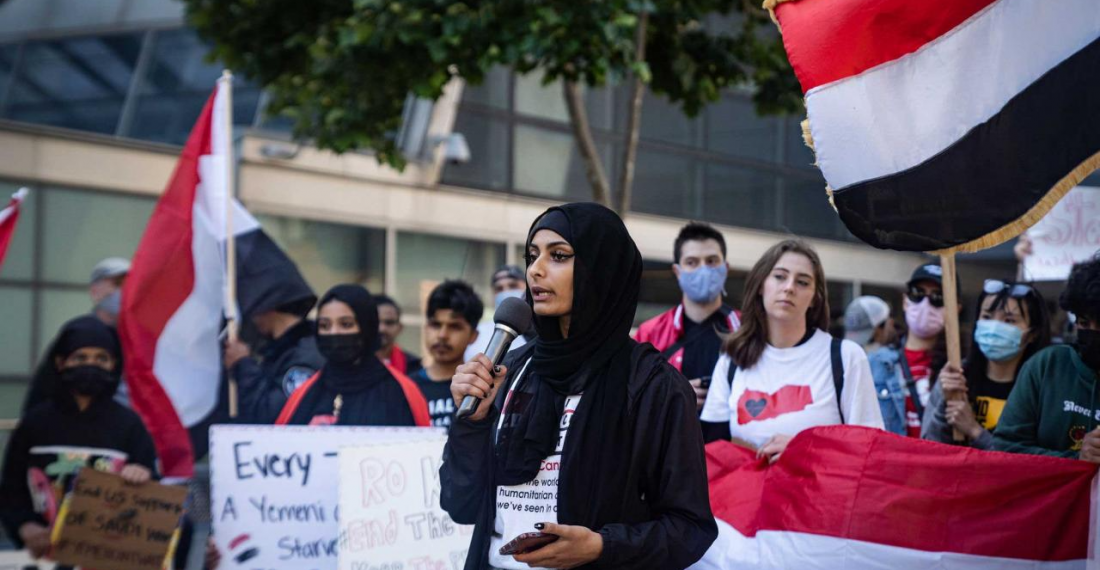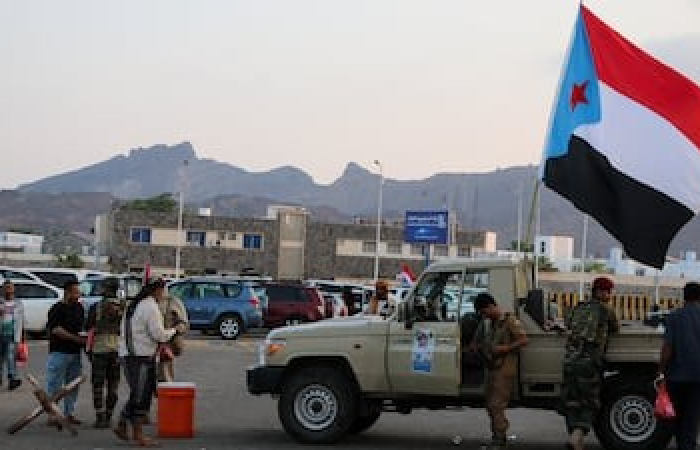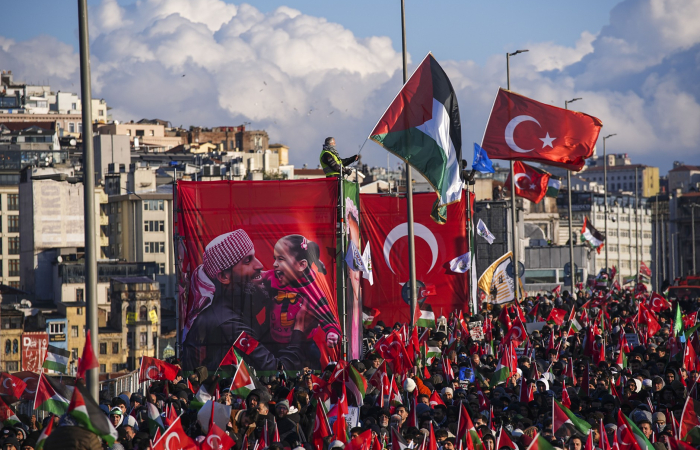In this second article in a series of three pieces about different aspects of the Yemeni diaspora, Hisham Almahdi discusses notable aspects and intricacies of the German and American diasporas. The first article can be read here and, the third article in this series will be published in due course.
Over the last decade Germany has been regarded as both a leader in Europe and internationally too. This can be seen not only in economic matters, but also concerning refugees. Particularly memorable was Angela Merkel’s open-arm policy towards Syrian refugees under the slogan “Wir schaffen das!” - or “We can do it!” - a policy now extended to Ukrainians in 2022. This policy, alongside a stable and growing economy, large gaps in the labour market, and a generally positive image of the country worldwide, made Germany a very attractive destination for migrants from all different backgrounds. This was indeed a crucial factor for many Yemenis who, over the last decade, have chosen Germany as their preferred destination.
Germany is therefore home to one of the largest Yemeni communities in Europe, and makes for a very good case study thanks to the diversity and complexity of the diaspora and its internal dynamics. Equally, the Yemeni diaspora in the USA - with its long history and complex make-up - makes for another interesting study. This article will take a deeper statistical and analytical look at the Yemeni diasporas particularly in Germany, and will touch on the USA too. I will discuss their natures, organisational bodies, impact, and struggles, and, especially in the case of the German example, through firsthand experiences.
Numbers and Facts:
According to the latest 2022 reports from the Federal Statistical Office of Germany, Statista, there are about 9,000 Yemeni nationals registered in Germany. This number, despite possible assumptions, has not seen any exponential growth in the years both before and during the current war. According to the same reports, there were about 2,700 Yemenis in Germany back in 2010, with a relatively stable growth rate of about 500-600 new migrants yearly.
Out of the some 9,000 Yemeni nationals registered in Germany, less than half are refugees. In 2022, this number stood at approximately 4,150. To put this into perspective, the number of refugees from relatively safe countries such as Morocco and Algeria stands at 4,800 and 5,600 refugees respectively. By means of contrast, however, Yemeni refugees don’t even come close to the almost one million Syrian refugees that settled in Germany since 2015. Especially in Europe, the role of geographical proximity is often a greater influencing factor on the size of the diaspora than the actual in-country situation from which refugees are fleeing. There are roughly the same amount of Yemeni, Moroccan and Algerian refugees in Germany, despite Morocco and Algeria being relatively safe countries.
Another important aspect to note is the age and background of Yemeni migrants compared to other migrants from the same region, namely Syrians. As of 2020, there were about 1,200 Yemeni students registered at German universities, a number that might not reflect the full picture because of recent arrivals who are not yet studying, or those who have already graduated and started careers. What makes the Yemeni diaspora in Germany special is its relative youth, with an average age of 28 for men and 26 for women.
Another unique feature of the Yemeni diaspora in Germany is its financial and academic background. Engineers and doctors make up the vast majority of the Yemeni diaspora in Germany, and a very high percentage of them come from the Yemeni upper classes. Things are different in both the Syrian and Ukrainian cases, as those who fled were not necessarily restricted by their financial situation or geopolitical realities. The result was that the Syrian diaspora formed out of all sorts of academic and social backgrounds creating a very diverse diaspora that functions very differently to the Yemeni diaspora, which consists of mostly academics and the upper class.

Problems, Challenges, and Failures:
The Yemeni diaspora in Germany is a tale of failure and self-destruction at its worst, and a symphony of academic prosperity and brilliant individuals at its best, with the difference mainly lying in the eye of the beholder. In this article, I will discuss both sides of this reality, while focusing on how various problems manifest themselves. This will allow us to get a better understanding of the true nature of the community.
Political Divisions:
This section concerns the nature of “political parties” within the Yemeni diaspora, and to avoid confusion, I must define what I mean by this. In this sense, “parties” here refer to ideological groupings and movements within the community, whether they are actual political parties, militias, or ideological movements. These parties are defined by their stance on certain big issues such as the Arab Spring, the Houthis, and international intervention in the Yemen conflict.
There is a long history of disputes and political disagreements in Yemeni society, especially in the last century. This fact reflects heavily on the members of the Yemeni diaspora and the way they interact with each other. Many political parties have proven themselves to be effective in connecting with most of the population on both ends of the political spectrum. This has of course had an effect on the diaspora, even though some of its members never experienced the events at the centre of the political divisions. The main political divisions within the Yemeni diaspora tend to centre around the following topics:
- The international intervention led by KSA and UAE.
- The Houthi rebellions backed by Iran.
- The 2011 revolution, the former president, and the Arab Spring in general.
- The southern separation movements.
- The “Islah” party (which is considered to be the Yemeni version of the Muslim Brotherhood)
All parties, including ones calling themselves “Independents,” have complicated relationships and interactions among themselves. There are some areas of shared interests, and other areas characterised by heated dispute, which in turn make it possible for one person to adopt several parts of different parties’ opinions simultaneously, resulting in Yemenis generally being unsure of how to act and react with fellow members of the diaspora, mostly out of fear of triggering arguments. These conflicts have long paralysed the diaspora and caused partitions and disputes among its members that made any unification efforts helpless, precluding the emergence of one final unified stance or active role vis-a-vis the homeland.
These disputes could be mostly observed in unions and communities, as they tend to be divided into ones for Yemenis, others for self-proclaimed separatist “South Arabians”, and sometimes even a third group consisting of migrants from Hadhramaut, a province in the east of Yemen. Each of these divisions tends to work and assemble separately, with little to no cooperation between them. While the separatists are politically active for the issues they believe in, Yemeni communities and unions find themselves paralysed by the diversity of their members and their political tendencies. Communities try to represent as large of a sample of the community as possible, and communities that define themselves as Yemeni tend to try to attract members from all different backgrounds and orientations.
This, however, ends up causing problems of its own, as these communities fail to have an open discourse between their members or even a clear identity to which people can connect. For example, some Yemeni communities fail to democratically elect an administration and instead agree on the least politically controversial figure. They then hold mock elections where the winners are already decided, and they continue this charade of electing mostly incompetent administrations that cannot make decisions for fear of alienating or irritating any given party within their community. Even humanitarian aid can fall victim to intra-diaspora politics over who has the right to carry out the mission, who the beneficiaries must be, which region is to be targeted, and with which organisations or political parties they should cooperate. In the end, the whole project is abandoned and people depend on individual initiatives instead.
Unions, on the other hand, completely refrain from mentioning politics, tending to act and declaring themselves to be as neutral as possible, only attending to their members’ needs, providing certain services, and organising various events. This issue has reached a critical point in Germany, where celebrating official Yemeni national holidays was abandoned due to some reservations of various parties. Even then, a great deal of distrust pervades, sometimes just because of a doubt or a rumour that a certain member in the union’s administration has a certain political orientation. This has the effect of lowering individuals’ involvement and participation in these unions, creating smaller closed groups of individuals with homogeneous views scattered all over the country, barely communicating with one another, and sometimes even disturbing and countering the others’ activities.
A simple example of this is an event that was held in Berlin in 2018 aiming at explaining the Yemen conflict to Germans, with a focus on cultural aspects of the country and the current humanitarian crisis. Some southerner separatists publicly demonstrated and ended up leaving the event, mainly because they believe their case was undermined, wrongly explained, or not stressed enough, causing a great deal of confusion among German attendees and a huge disruption to the flow of the event.
This constant fear of igniting a dispute and losing members, who are already divided between Yemenis and Southerners and belong to numerous parties, immobilises Yemeni unions and communities, rendering them ineffective in most cases. These organisational bodies, especially unions do have a great untapped potential, however. Their organisational experience and their academically successful members could have been great assets in making these communities active and effective.
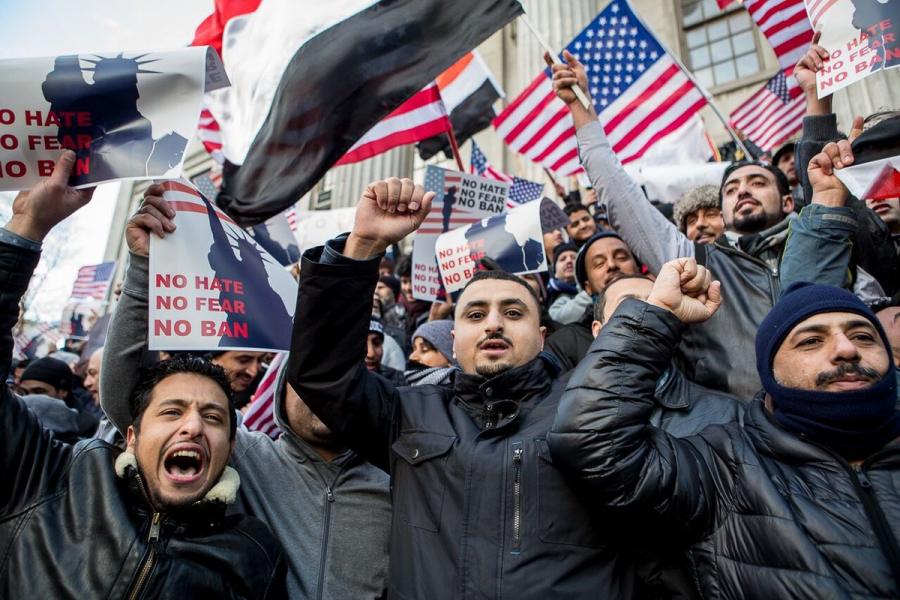
Identity Crisis:
A crucial point that deserves more attention and research is the identity crisis that Yemenis experience on individual and collective levels, both inside and outside the country. Questions of what Yemen is, who and what Yemenis are, and on what common ground members of the diaspora can unite, are being raised continuously. In fact, many of the disputes related to political differences stem in one way or another from this very concerning identity crisis. Here we will be briefly viewing this issue on two different levels: the individual, and the collective.
Individual level:
Leaving one’s home in the midst of war to a completely different country that bears little resemblance to one’s own culture and beliefs, is sure to create some form of identity crisis or at least raise some existential questions here and there. In the Yemeni case in Germany, there is a lot to uncover on both individual and collective levels, and both on the positive and negative side too. Indeed, these identity crises end up causing a chain reaction of events which can have both positive and destructive effects. However, it might be more helpful to focus on how these identity crises have created two extremes, that, in one way or another, affect the Yemeni community and any role they could play in their diaspora communities in the wider societies of their host-countries, or back in Yemen.
The first extreme is created by a combination of culture shock, conservatism, fear, and age. The Yemeni community in the USA is a good example here, mainly because it is multi-generational and has a long history compared to most of the other diaspora communities; the USA has after all seen a long history of Yemeni immigration. Its families are connected and neither a specific class nor financial background dictates the behaviour of the wider diaspora. This is true in the German case as well, although not to the same extent.
What usually happens when the previously-mentioned circumstances - namely a culture shock, conservatism, fear, and age - combine, is that the fear and worry these communities have regarding a possible loss of their identity, culture, and tradition creates an atmosphere of existential worry that results in people confining themselves to small communities, where they can keep the language and culture alive, but at the expense of integration into the societies of their host countries. Younger generations tend to or are forced to marry one another or head back home, where the culture is believed to be untouched; sometimes, even schools and other educational institutes are founded to control their kids’ education and upbringing. It must however be mentioned that not the whole Yemeni community in the US acts in this way.
These communities, isolated from the rest of society, end up becoming more conservative than in-country Yemeni society, which conversely keeps evolving with time. This conservative tendency is not exclusive to Yemenis; it can also be seen in some Turkish and Syrian communities in Germany, or other Asian and Latin communities in the US. Indeed, the similarities are stark. These closed communities do not have good contacts or interactions with the host countries and their societies, and even prefer not to engage with other members of the diaspora whom they view as less conservative.
Indeed, this is the other side of the same coin. Some harbour a certain disdain or anger towards themselves, their culture, religion, language, or their fellow diaspora members. This disdain is especially noticeable among women who refrain from having contact with Yemeni men out of fear of harassment, or are haunted by past experiences. Disagreements between religious and non-religious groups within the Yemeni diaspora also create an environment of hostility and mistrust, hurting the wider diaspora further.
These extremes are relatively less evident and prevalent within two groups, namely young people, and those in majority Muslim/Arab countries. In the former case, this is because young people tend to be more flexible and open towards each other; and in the latter, because diasporas in Muslim countries tend to find more commonalities with the societies around them, causing less fear for one’s identity’s loss. The Yemeni diaspora in Turkey and Egypt are good examples of this. The Yemeni community in Germany does not appear to follow a certain common pattern, but rather includes all sorts of different identity crises with their responses manifesting in individuals and groups. The only noteworthy aspect of this diaspora in this regard is its relatively high interaction with society, however. The majority are academics and professionals, though this interaction is largely limited to working hours.
Collective level:
The political disputes mentioned earlier might only be a reflection of a long history of collective identity crises, but they put into question what and who is considered truly Yemeni, and what kind of common ground people can find and unite around. Recently, these crises have been raised on three different levels. First, decades of separation between the north and the south, caused by the British and Ottomans, ended in 1990 with a messy unification process between two fragile states. This unification turned into a war only four years later, the wounds of which have not been dealt with until this day.
Secondly, we have the Arab spring that reached Yemen in 2011, splitting the population and raising questions about the nature of the state, the balance of power, social justice, freedoms, corruption, dictatorship, the value of Yemenis’ lives and so on. An attempt to deal with all these concerns at once led the country to a national dialogue that was criticised by many. This is despite its outcomes being described by others as progress in the right direction as it reshaped many contemporary aspects of Yemen. However, the true realisation of these outcomes never came to pass as the Houthis violently stopped the process and took over most of the country just as a referendum on the new constitution was being organised.
Finally, there is a new rising nationalistic movement that sees Yemen beyond the Hashemite ideology pushed by the Houthis, about which you can read more here. These nationalists are trying to revive prehistorical Yemen and raise questions about the Islamic, Arabian, and Yemeni parts of their collective identity. The movement does not have an organisational body as such, and contains a very wide range of views from the far left to the far right, where extremists in the movement even refuse to acknowledge Houthis as Yemenis in hate speech that almost reaches a point of promoting ethnic cleansing.
This serious and deep identity crisis reflects on the diaspora as well, opening more wounds and exacerbating inter-community tensions, and seriously complicating any efforts to reconcile diverging opinions on Yemen, Yemenis, and the future of both.
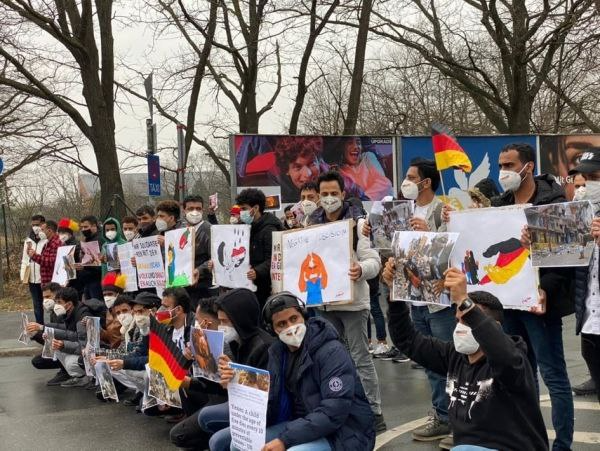
Disputes and misunderstandings between in-country Yemenis and the diaspora:
There is an undeniable growing distance separating those in Yemen from the diaspora abroad. This distance is mainly caused by misunderstandings and generalisations that deepen whenever the conflict worsens. Yemenis abroad do, justifiably as well, have different concerns, beliefs, and lifestyles than those in Yemen, creating different views regarding the current conflict. Locals often regard the views of the diaspora as inferior, arrogant, and even lacking any fundamental understanding of the situation on the ground, as well as demonstrating - in some cases - no understanding or compassion towards people’s suffering back home.
All of this is made worse by the usual conflicts between upper and lower classes, and between the diaspora and local Yemenis. People see how some in the diaspora are calling for an all-out total war until this or that party is eliminated, and they hear others call for a seemingly utopian peace agreement with no consideration for the situation on the ground, even ignoring the crimes of certain sides regardless of any transitional justice. Feminist movements, to name another example, are seen as only focusing on representation in decision-making positions, speaking out most strongly only on cases which capture the public’s attention, while leaving millions of women’s day-to-day struggles untouched or poorly discussed, and focusing on subjects that are not a priority for Yemeni women, such as the headscarf and LGBT rights.
It is only natural that people would distance themselves from those who hold strongly opposing views and live very different lives; however, there is a tendency of generalisation that extrapolates the consequences of these emotions onto the entirety of the diaspora. This leaves its mark on many members of the diaspora, who feel misunderstood and neglected despite their efforts and genuine concerns regarding the suffering of their people. One form of this growing distance between the diaspora and local Yemenis affected the outcomes of the National Dialogue that took place after the revolution, as some clauses were criticised for excluding many Yemenis in the diaspora from their right, and even possible duties, toward their country. One of the clauses lists a couple of requirements for various positions in the state from the presidency and party leaderships, down to any political/state positions. Among these requirements were things like not having a non-Yemeni spouse, having two Yemeni parents, and not holding any other citizenship than the Yemeni. Citizenship was also listed as one of the requirements for holding leading positions in universities and research centers. All this makes the diaspora question and doubt the acceptance of the public, and their possible role in any future in Yemen, making them explicitly choose between their personal lives (e.g. whom to marry) and taking a leading role in their home country.
Another sign of this particular dislike between the two groups can be further illustrated in two examples of influential political public figures and the way people view them. The first one is “Tawakkoul Karman” the Nobel Peace Prize winner who fled the country after leading the 2011 revolution. To this day, despite everything she does, whether it be opening a private TV channel, offering grants, scholarships, aid, and various programs through her foundation, or being a far-reaching voice among the Yemeni community worldwide, she still faces a huge deal of hate. She does indeed get involved in controversial acts from time to time, but the hate towards her, apart from her being blamed for the war for leading the revolution, is also due to the fact she fled. Comments on her posts on social media are full of accusations of selling out the country and its peace for money, leaving people behind, and not caring about the struggle of the folk while enjoying the bliss of the outside world.
Marwan Al-Ghafory, on the other hand, is a writer, poet and surgeon living in Germany, who is very active with his controversial and confrontational writings about conflict and society, and lately religion and history. A couple of years ago Marwan, with the help of others, launched an application called “Tabiby” (My Doctor), a completely free-of-charge service that allows Yemenis who can’t afford, or don’t have access to, medical care to get consultation and medical advice from Yemeni doctors working all over the globe, and in almost all medical fields. This service was indeed very useful to thousands of Yemenis in urgent need, especially during the Covid-19 pandemic as Houthis refused to acknowledge its existence in Yemen. All this, however, could not change the negative way many people felt about him. He was after all a doctor in Germany who has a good life and keeps philosophising about a conflict he is not close to, and has opinions that don’t satisfy this party or the other.
Although this growing polarisation between diaspora and in-country Yemenis is filled with misunderstandings and a complicated political situation, the disagreements and differences are not enough to irretrievably and irreconcilably divide the two communities. This situation should however not be ignored, especially because it gives the impression that no matter what the diaspora does, it will always be judged differently on account of this separation and distance from Yemen itself.
The Yemeni diaspora in Germany is just a carefully chosen example that is so diverse it provides us with windows into a great deal of the Yemeni diaspora worldwide. Unfortunately, this view is incomplete, due to complexities that are out of the diaspora’s control. Yet, the case of the diaspora in Germany still gives us important insights into the great tragedy disputes could cause, even in highly-educated and amazingly promising communities.



